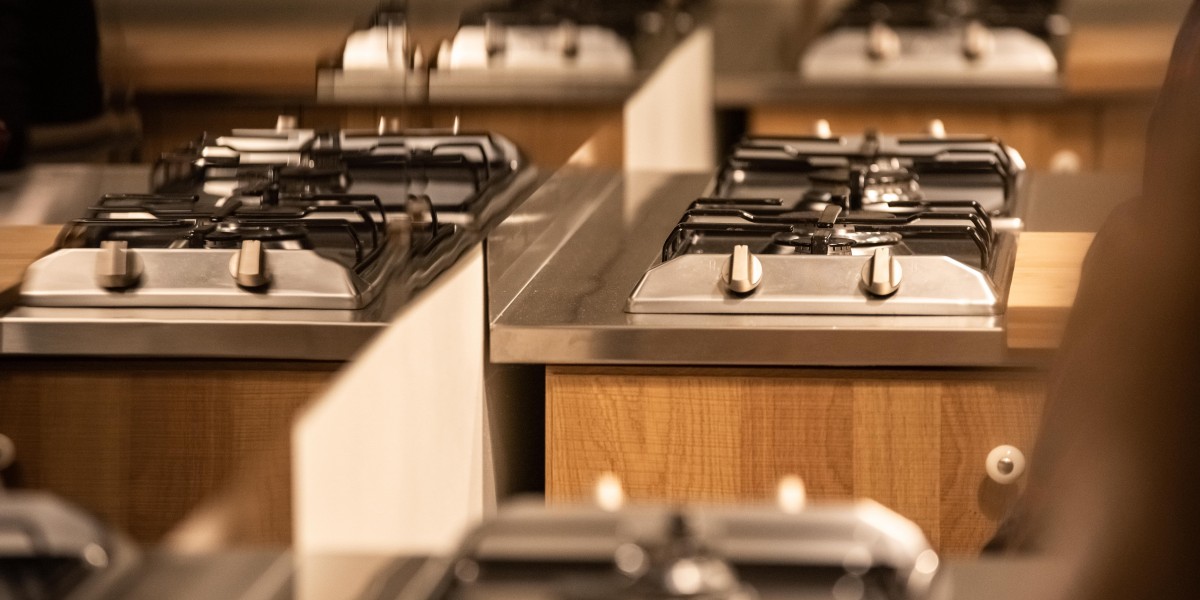Built-In Ovens in the UK: A Comprehensive Guide
Built-in ovens have ended up being a vital function in modern kitchen areas throughout the UK, offering both performance and style. They are created to fit seamlessly into kitchen cabinets, offering a smooth and integrated look that matches modern kitchen designs. This post explores the benefits of built-in ovens, the various types offered, essential features to consider, and regularly asked concerns that will help customers make notified choices.
Advantages of Built-In Ovens
Picking a built-in oven includes numerous advantages, which consist of:
Space-Saving Design: built in electric cooker-in ovens are developed to fit within kitchen cabinetry, making them ideal for smaller areas where free-standing units may take up too much space.
Aesthetic Appeal: These ovens provide a clean, modern appearance that enhances the overall appearance of the kitchen. They can be positioned at eye level, making them accessible while reducing bending or crouching.
Integrated Technology: Many built-in ovens come equipped with advanced cooking technologies, consisting of convection cooking and self-cleaning features, making cooking more efficient and problem-free.
Increased Resale Value: A contemporary, trendy kitchen with built-in appliances can substantially increase a home's resale worth, making it more appealing to prospective purchasers.
Variety of Options: Built-in ovens been available in numerous sizes and styles, enabling house owners to pick one that fits their specific kitchen layout and cooking needs.
Types of Built-In Ovens
Built-in ovens are offered in numerous configurations, each catering to different cooking styles and choices. Here are the main types:
| Type of Built-In Oven | Description |
|---|---|
| Single Ovens | These ovens come with one compartment, typically suitable for general baking and roasting requirements. |
| Double Ovens | Featuring two compartments, double ovens enable for simultaneous cooking at different temperature levels, making them perfect for large families or those who regularly captivate guests. |
| Combination Ovens | Integrating a standard oven with a microwave, these versatile systems save area and time, enabling rapid heating and cooking. |
| Steam Ovens | Making use of steam cooking innovation, steam ovens are perfect for healthy cooking, maintaining wetness and nutrients in food while offering an unique cooking technique. |
| Wall Ovens | Set up higher up in the kitchen, wall ovens can be single or double. They enable simple gain access to while maximizing space on the counter. |
Secret Features to Consider
When choosing a built-in oven, it's vital to examine certain functions. Consumers should think about:
Size and Capacity: Determine the space available in your kitchen and choose an oven that fits comfortably without frustrating the design.
Energy Efficiency: Look for ovens with higher energy scores, as they can save cash gradually and are more environmentally friendly.
Cooking 5 Functions: Different ovens come with numerous cooking modes-- such as baking, grilling, and rotisserie. Evaluate which functions accommodate your cooking style.
Control Options: Newer designs often include touch controls, digital user interfaces, and clever technology that enables remote operation through smartphone apps.

Self-Cleaning Features: Many built-in ovens come with self-cleaning alternatives, significantly streamlining oven upkeep.
Finish and Design: Choose surfaces-- like stainless-steel, SIA AMZDO102 Black Built-In Double Oven - 60cm, or white-- that enhance the total kitchen aesthetic.
Popular Brands in the UK
Numerous brands dominate the built-in oven market, each offering numerous features and cost points. Some of the most popular alternatives include:
- Bosch
- Siemens
- Neff
- Samsung
- Hotpoint
- AEG
- Miele
These brand names are understood for their dependability, development, and client service, making them a trusted choice for customers.
Often Asked Questions (FAQs)
1. Are built-in ovens more pricey than freestanding models?
Built-in ovens tend to be more expensive than freestanding models due to their custom-made sizing, styling, and advanced features. However, they supply higher value in terms of visual appeals and functionality.
2. Can I install a built-in oven myself?
While some useful house owners may try a DIY setup, it is often advised to hire a professional to ensure proper setup, particularly worrying electrical and plumbing connections.
3. How do I clean my built-in oven?
Lots of built in electric oven-in ovens included self-cleaning alternatives, which substantially decrease the effort needed. For designs without this feature, regular cleaning with non-abrasive cleaners and a soft fabric is necessary for upkeep.
4. What is the typical life expectancy of a built-in oven?
Normally, built-in ovens can last between 10 to 15 years, depending upon usage and maintenance. Routine maintenance can help extend the appliance's life-span.

5. Can I replace a built-in oven with a different brand name?
Yes, built-in ovens can normally be replaced with any compatible design, but it is essential to guarantee that the brand-new oven matches the existing cut-out space in the kitchen cabinetry.
Built-in ovens offer an advanced blend of utility and design, making them an integral part of contemporary cooking areas in the UK. With various types, distinct features, and a range of alternatives available from popular brand names, house owners have adequate choices to pick an oven that satisfies their cooking requirements and kitchen visual appeals. By understanding the advantages, types, and vital functions, consumers can make informed decisions that boost their culinary experiences. Whether for everyday meals or unique events, a built-in oven is a financial investment that guarantees benefit and quality for years to come.







